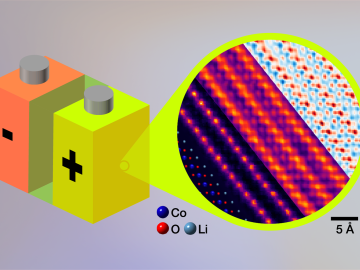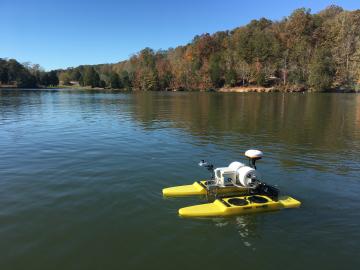
Filter News
Area of Research
- Advanced Manufacturing (3)
- Biological Systems (1)
- Biology and Environment (23)
- Computational Engineering (1)
- Computer Science (6)
- Electricity and Smart Grid (1)
- Energy Science (32)
- Functional Materials for Energy (1)
- Fusion and Fission (7)
- Fusion Energy (5)
- Materials (25)
- Materials for Computing (2)
- National Security (15)
- Neutron Science (5)
- Nuclear Science and Technology (1)
- Quantum information Science (2)
- Supercomputing (20)
News Topics
- (-) Artificial Intelligence (26)
- (-) Bioenergy (28)
- (-) Composites (5)
- (-) Cybersecurity (12)
- (-) Fusion (12)
- (-) Grid (18)
- (-) Microscopy (18)
- 3-D Printing/Advanced Manufacturing (27)
- Advanced Reactors (11)
- Big Data (16)
- Biology (28)
- Biomedical (11)
- Biotechnology (4)
- Buildings (16)
- Chemical Sciences (15)
- Clean Water (10)
- Computer Science (55)
- Coronavirus (9)
- Critical Materials (4)
- Element Discovery (1)
- Energy Storage (33)
- Environment (55)
- Exascale Computing (10)
- Fossil Energy (1)
- Frontier (12)
- High-Performance Computing (16)
- Hydropower (8)
- Irradiation (1)
- Isotopes (5)
- ITER (2)
- Machine Learning (15)
- Materials (37)
- Materials Science (36)
- Mercury (2)
- Molten Salt (1)
- Nanotechnology (15)
- National Security (17)
- Neutron Science (33)
- Nuclear Energy (27)
- Partnerships (8)
- Physics (16)
- Polymers (7)
- Quantum Computing (7)
- Quantum Science (19)
- Security (6)
- Simulation (6)
- Space Exploration (8)
- Summit (16)
- Transportation (22)
Media Contacts

What’s getting Jim Szybist fired up these days? It’s the opportunity to apply his years of alternative fuel combustion and thermodynamics research to the challenge of cleaning up the hard-to-decarbonize, heavy-duty mobility sector — from airplanes to locomotives to ships and massive farm combines.

Researchers at ORNL are teaching microscopes to drive discoveries with an intuitive algorithm, developed at the lab’s Center for Nanophase Materials Sciences, that could guide breakthroughs in new materials for energy technologies, sensing and computing.

A team of researchers has developed a novel, machine learning–based technique to explore and identify relationships among medical concepts using electronic health record data across multiple healthcare providers.

A study led by researchers at ORNL could help make materials design as customizable as point-and-click.

A new Department of Energy report produced by Oak Ridge National Laboratory identifies several supply chain must-haves in maintaining the pivotal role hydropower will play in decarbonizing the nation’s grid.

Oak Ridge National Laboratory researchers demonstrated an electron microscopy technique for imaging lithium in energy storage materials, such as lithium ion batteries, at the atomic scale.

Tackling the climate crisis and achieving an equitable clean energy future are among the biggest challenges of our time.

Unequal access to modern infrastructure is a feature of growing cities, according to a study published this week in the Proceedings of the National Academy of Sciences

ORNL scientists had a problem mapping the genomes of bacteria to better understand the origins of their physical traits and improve their function for bioenergy production.

Measuring water quality throughout river networks with precision, speed and at lower cost than traditional methods is now possible with AquaBOT, an aquatic drone developed by Oak Ridge National Laboratory.


